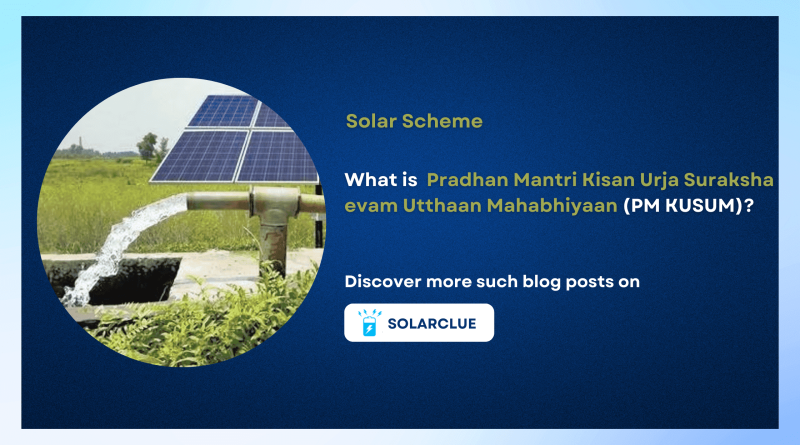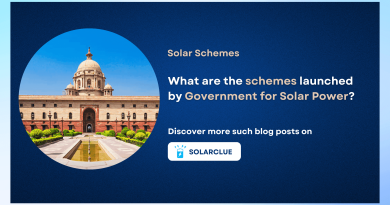PM KUSUM Yojana
The Indian government has launched the Pradhan Mantri Kisan Urja Suraksha evam Utthaan Mahabhiyaan (PM KUSUM) as a significant step towards achieving sustainable agriculture and ensuring energy security. This ambitious program aims to bring about a transformative change by adding 30,800 MW of solar capacity by the year 2022. The initiative holds the potential to revolutionize the energy scenario for farmers throughout the country. In this blog, we will delve into the primary goals, components, and the strategies employed by PM KUSUM.
Objective
PM KUSUM seeks to address the multifaceted challenges faced by the agricultural sector by incorporating solar power solutions. With a total central financial support of Rs. 34,422 Crore, the scheme is designed to enhance the agricultural ecosystem through three key components.
Components of PM KUSUM:
I. Component A:
Aim: Installation of small Solar Power Plants (SEPP) with a cumulative capacity of 10,000 MW.
Entities: Individual farmers, groups of farmers, cooperatives, panchayats, Farmer Producer Organisations (FPO), and Water User associations (WUA).
Implementation: DISCOMs will notify surplus capacity for grid connection, inviting applications for solar energy plants.
Financial Support: DISCOMs will purchase solar power at a feed-in-tariff (FiT) determined by State Electricity Regulatory Commissions (SERC). DISCOMs are eligible for Performance-Based Incentives (PBI) for five years.
II. Component B:
Aim: Installation of 20 lakh standalone solar-powered agriculture pumps in off-grid areas.
Support: Central Financial Assistance (CFA) of 30% of benchmark cost or tender cost, with state governments providing a minimum of 30% subsidy. Farmers contribute up to 40%, with bank finance options available.
III. Component C:
Sub-Components:
a. Individual Pump Solarisation (IPS):
– Aim: Supporting individual farmers to solarise grid-connected agriculture pumps.
– Support: CFA of 30%, with state government subsidy of at least 30% and a farmer contribution of up to 40%.
b. Feeder Level Solarisation (FLS):
– Aim: Solarising agriculture feeders in a project period of 25 years.
– Support: CFA of 30% (up to Rs. 1.05 Cr/MW), with 50% subsidy available in North Eastern States, Sikkim, Jammu & Kashmir, Himachal Pradesh, Uttarakhand, Lakshadweep, and Andaman & Nicobar Islands.
Implementation:
Component A:
1. Farmers can develop SEPP individually or through local DISCOMs.
2. PBI eligibility for DISCOMs: Rs. 0.40 per unit purchased or Rs. 6.6 lakh per MW, whichever is less, for five years.
Component B & Component C (IPS):
State-wise allocation and final sanction issued by MNRE.
Projects to be completed within 24 months from sanction.
Advance CFA released after vendor selection, balance after project completion.
Component C (FLS):
CFA released based on CAPEX/RESCO mode of implementation.
CAPEX: 40% advance on total CFA, balance after commissioning.
RESCO: No advance, full CFA released post-commissioning.
Conclusion:
Pradhan Mantri Kisan Urja Suraksha evam Utthaan Mahabhiyaan is more than just a solar initiative; it’s a testament to the government’s commitment to transforming the agricultural landscape. By blending technology with agriculture, PM KUSUM not only promises energy security for farmers but also signifies a significant step towards sustainable development. As the scheme progresses, the vision of a greener and self-sufficient agricultural sector becomes a reality, bringing prosperity to the lives of millions of farmers across India.




